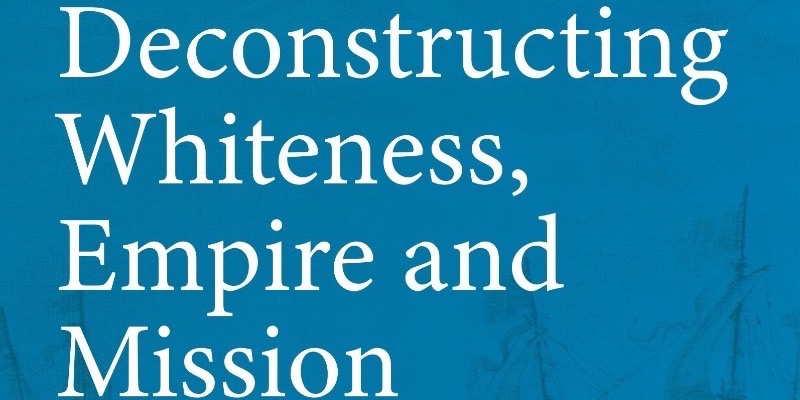Book Review: Deconstructing Whiteness, Empire and Mission edited by Anthony G Reddie and Carol Troupe, SCM Press 2023

Author: John Schofield
John Schofield is a former Chair of St Mark’s CRC, and past Principal of an Anglican Ministry Training Scheme. |
This is a series of eighteen essays set out in four sections: Decolonising Theological Education, Perspectives on History, Personal Reflections, and Explorations of Whiteness. The contributors are both Black people and White people, female and male, hailing both from the United Kingdom and from other parts of the world. They all, in their distinctive voices, address a part or the whole of the three – I’m tempted to say monsters – identified in the title.
It is a challenging and often disturbing book. It highlights the extent to which within this context racism is mainly a white problem; that white is so normal that we who are white don’t even notice we are white with all the privileges that come with whiteness; that mission, in its historical appearance from the late seventeenth century on, is Eurocentric and white; and that the ‘civilization’ which the missionaries attached to their missionary efforts usually equated to contemporary white western norms. And it made me recognise that I have a strong tendency to assume the whiteness of a theologian or writer, particularly if the name gives me no clue.
Reading the book has left me wondering whether what is almost a lifelong discomfort with the word mission, certainly as it is applied to what I and the churches I have worked in have been engaged in, derives from a postcolonial sensitivity that I didn’t know I had. I want (even if I don’t always manage) to avoid arrogance and condescension. And might that be the lasting interior influence of the year I spent at St Cuthbert’s, Tsolo in the Transkei at the height of the apartheid era?
I also found myself wondering whether the problem of inherent whiteness is because of the fact that, with certain exceptions (for instance the Mar Thoma Church in India, Coptic Churches), Christianity for centuries became a white religion, especially after the rise of Islam?
As a retired theological educator, I found Anthony Reddie’s chapter on the curriculum of theological education, and his critique of what are called the Common Awards (the academic framework of ministerial education for the majority of training courses nowadays) especially interesting. A mea cupla or two is warranted, even though I was teaching shortly before Common Awards came into being. Reddie (now the first Professor of Black Theology at Oxford) sets out clearly how the normative framing of Whiteness affects the curriculum, and the way in which this radically undervalues the experience of non-white students, as a result of ‘the absolute respectability politics that drenches the whole enterprise within a preferential option for middle-class White people.’
Similarly, as someone who once tried to teach the history of mission in the last five hundred years in two two hour sessions (!) I found the historical chapters fascinating – and horrific. But when as a 21 year old I wrote the history of that ‘mission station’ in South Africa, was I not perpetuating the story of white ‘doing unto’, while admiring black achievements both past and present?
It is interesting that though the spectre of slavery haunts many pages of this book, this is not a book primarily about the legacy of slavery; it is also about the legacy of mission’s demeaning and disparaging the humanity of those being ‘missioned to’. The historical chapters are full of examples of missionaries’ patronising contempt for savages and barbarians, even after their ‘conversion’.
The chapter on empire and debt is very challenging – and another case of our not actually seeing what is in front of our own eyes. Then Rachel Starr in her essay issues a stark warning to churches which are committed to being inclusive: ‘Churches assume that the way to make people welcome is by treating everyone as if they were the same as them. In White-dominated churches, this often results in assumptions that the likes and needs of the White majority are appropriate for everybody.’
One criticism of the book is that it could be seen as being too limited by its constant reference to and reliance on the records of the London Missionary Society (now the Council for World Mission). Would raiding the archives of other missionary agencies have painted a different picture, or would it simply underline the truth of what is written here? And there is nothing about what I think may be an interesting development, that of reverse mission, and how that relates to whiteness and empire and their intertwining with mission.
The older I am, the more aware I am about, and grapple with, postcolonialism. This book opens new horizons in this area while clearly meeting the reader in their own current situation head on. The white reader in particular is encouraged to be uncomfortable, to start the difficult task of recognising and then stepping out of the narratives of whiteness and empire, to understand that empire is still alive long after empires have disappeared, and that in the ongoing afterlife of colonialism the past that is not past reappears, always, to rupture the present.
John Schofield
Author/copyright permissions
John Schofield |
Resource Type
Book review |